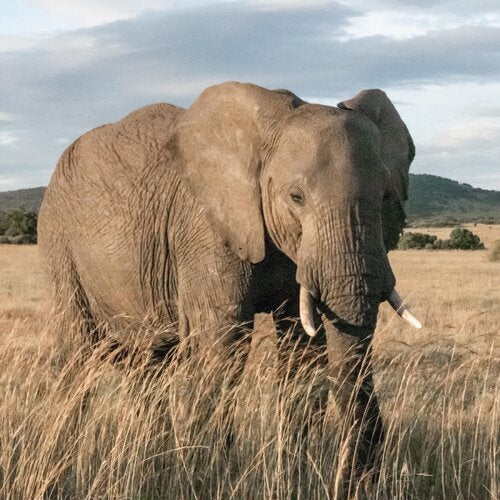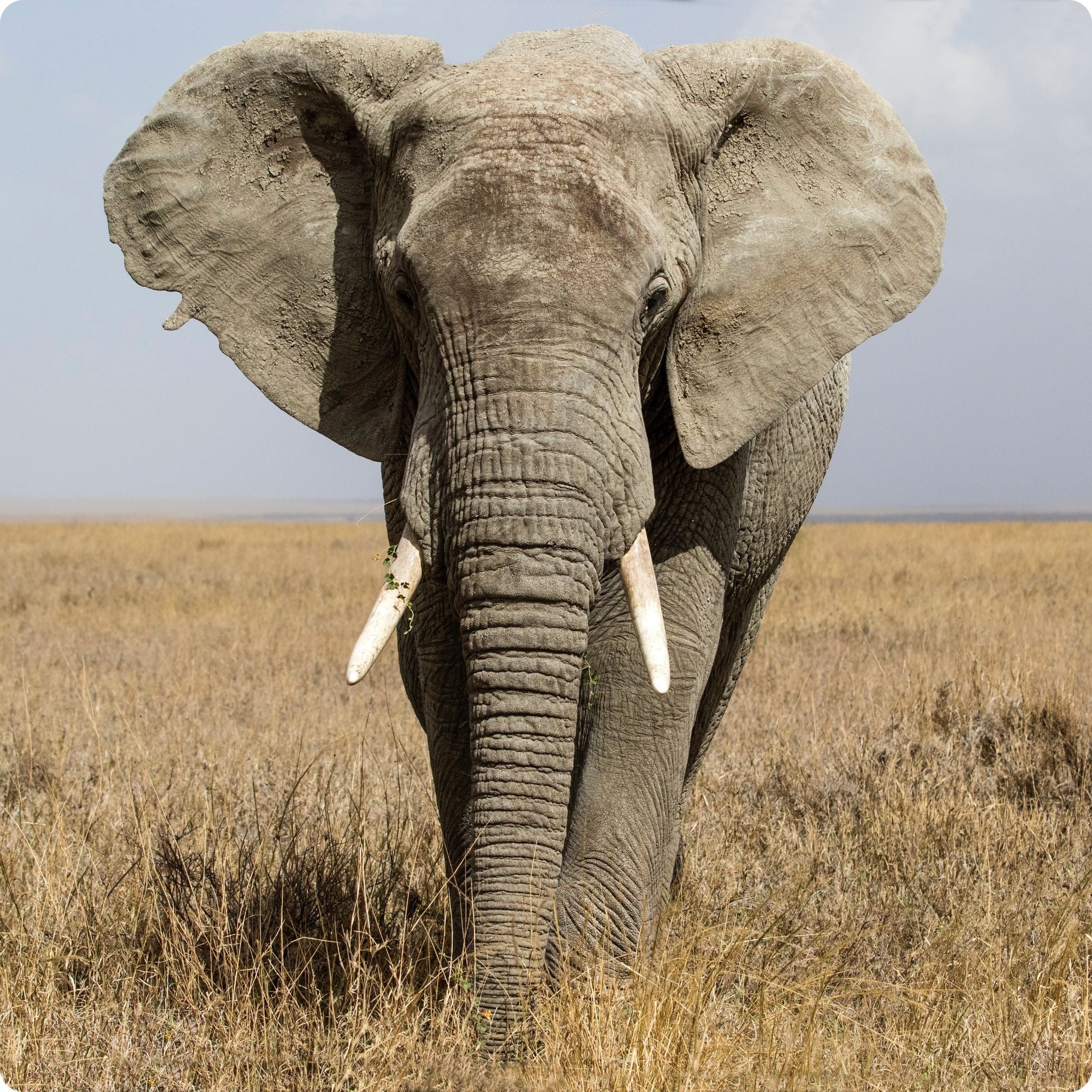
African Elephant
Learn all about the huge African elephant, wow your friends with some fascinating facts, read about how big they really are, where they live, how they spend their day and what they eat. Understand what makes these creatures so important and why they are threatened.
The largest animal walking on Earth!
Elephants are smart, emotional, self-aware, and highly social creatures, they are also the largest land animals on Earth. They are slightly larger than Asian elephants and can be identified by their larger ears that are shaped a little like the continent of Africa.
There are two subspecies of African elephants; the Savanna (or bush) elephant and the Forest elephant. Savanna elephants are larger than Forest elephants, and their tusks curve outwards whereas Forest elephants are darker and their tusks are straighter and point downwards.
Elephants can be immediately recognised by their trunk which is a fusion of their nose and upper lip; it contains 100,000 muscles and no bones. The trunk is used for smelling, breathing, trumpeting and drinking. African elephants have two finger like features at the end of their trunk that they can use to grab things.


Both male and female African elephants have tusks which they use to dig for food and water and strip bark from trees. Males also use their tusks to battle one another. Elephant tusks never stop growing, so enormous tusks can be a sign of old age. However, some elephants are now born without tusks and for those with tusks they are much smaller than in the past - the average size has halved in the last 100 years.
African elephants use their huge ears to radiate heat to help keep them cool, they also enjoy showering by sucking water into their trunks and spraying it all over themselves. They will often spray mud over themselves to protect them from the hot African sun and to clear any bugs off of their skin.
Where do African elephants live?
African elephants can be found in 37 countries in throughout Africa; throughout sub-Saharan Africa and the rainforests of central and West Africa and reaching Mali’s Sahel desert in the north.
Elephants are not territorial but they do need huge amounts of food, water and space to survive. An individuals home range varies from population to population but is estimated to be between 15 and 3,700 square kilometres.
How do elephants spend their day?
African elephants are well known for living in close social groups or ‘herds’ of females (cows) and their calves, the group is led by a dominant matriarch. The male (bull) elephants tend to roam on their own.
Elephants continue to grow throughout their lives which means that the biggest elephant in a herd may well be the oldest. African elephants have a lifespan of up to 70 years in the wild.
Elephants have a longer pregnancy than any other mammal, almost 22 months and usually give birth to one calf every two to four years. At birth, elephants stand just under a metre tall and already weigh over 90kg, heavier than most adult men! A baby elephant or ‘calf’ will feed on its mothers’ milk for the first two years of its life.


As well as being huge, elephants are thought to be one of the most intelligent animals on the planet and also have amazing long-term memories. One scientific study concluded that a group of older elephants had remembered a drought that had occurred 30 years previously. Elephants also appear to show empathy towards one another and even mourn their dead.
Elephants, particularly males can be dangerous and show signs of aggression.
What do African elephants eat?
Elephants are herbivores and eat a wide variety of grasses, herbs, fruits, plants and trees. Due to their huge size, elephants need an awful lot of food and can consume over 150kg of food a day - that’s over 50 tonnes a year! Elephants do not sleep much, but roam over great distances to find the large quantities of food that they need. Elephants can deposit more than 150kg of dung everyday!
Why are African elephants so important?
African elephants are incredibly important to the ecosystem in which they live and are known as a ‘keystone’ species – so other species are reliant on them.
Elephants play a pivotal role in shaping their habitat because of the enormous impact they have, by creating clearings and gaps in the forests. This can allow more sunlight into a previously dark forest or create an environment favourable to other animals.
The seeds of many plant species need to be digested by an elephant before they will germinate. It is suggested that at least a third of tree species in central African forests rely on elephants for seed distribution in this way.






